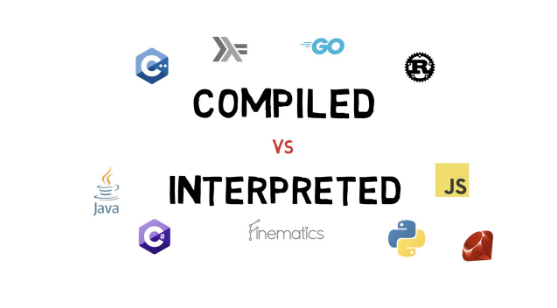
What is the difference between a compiled and interpreted programming language?
Programming languages can be broadly categorized into two types based on how they are processed: compiled and interpreted. Understanding the difference between the two can help you choose the right programming language for your project, and can also help you optimize your code for better performance. In this article, we’ll discuss the differences between compiled and interpreted programming languages.
Compiled Programming Languages
Compiled programming languages are those in which the source code is compiled into machine code before it is executed. Machine code is a low-level language that can be executed directly by the computer’s CPU. When a program written in a compiled language is compiled, the source code is converted into an executable file that can be run on the target machine. The compiled code is optimized for the specific hardware and operating system of the machine on which it is intended to run.
Some examples of compiled programming languages include C, C++, Java, and Swift. When you write code in a compiled language, you typically use an integrated development environment (IDE) to write and edit the code. The IDE will typically have a built-in compiler that can generate the executable file from the source code.
One advantage of compiled languages is that they tend to be faster than interpreted languages since the code is already translated into machine code before it is executed. However, this also means that compiled code is less portable since it is specific to the hardware and operating system of the machine on which it was compiled.
Interpreted Programming Languages
Interpreted programming languages, on the other hand, are those in which the source code is executed directly by an interpreter, without being compiled into machine code first. The interpreter reads the source code line by line and executes each line as it is read. The interpreter is responsible for translating the source code into machine code at runtime.
Some examples of interpreted programming languages include Python, Ruby, and JavaScript. When you write code in an interpreted language, you can typically run it directly from the command line or from an IDE without the need for a separate compilation step.
One advantage of interpreted languages is that they tend to be more portable than compiled languages, since the same source code can be executed on different hardware and operating systems without the need for recompilation. However, interpreted code is generally slower than compiled code, since it has to be translated into machine code at runtime.
Conclusion
In conclusion, the main difference between compiled and interpreted programming languages is in how they are processed. Compiled languages are translated into machine code before they are executed, while interpreted languages are translated into machine code at runtime by an interpreter. Both types of languages have their advantages and disadvantages, and the choice between them depends on the specific needs of your project. If you need maximum speed and performance, you may want to choose a compiled language, while if you need portability and ease of use, an interpreted language may be a better choice.
Java Software Engineer
1moJava can be considered both a compiled and an interpreted language because its source code is first compiled into a binary byte-code. This byte-code runs on the Java Virtual Machine (JVM), which is usually a software-based interpreter.